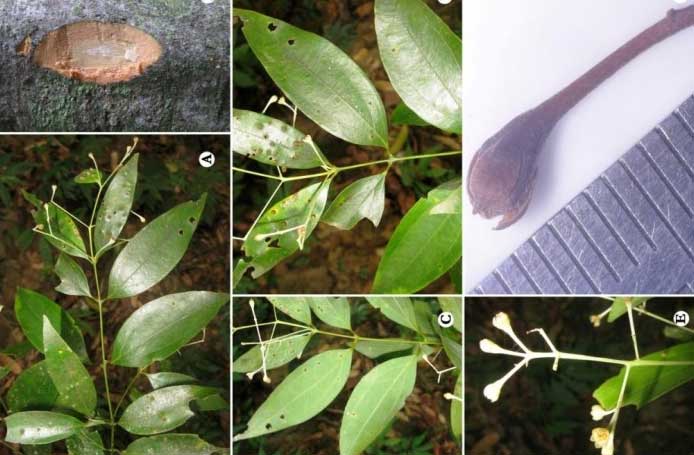

In a significant botanical breakthrough, scientists at the Kerala Forest Research Institute (KFRI), Peechi, have identified a new species of tree—Cinnamomum agasthyamalayanum—from the evergreen forests of Agasthyamala in Thiruvananthapuram and Rosemala in Kollam district.
The tree, notable for its strong camphor fragrance, represents a rare and endemic member of the Cinnamomum genus, and the only known native Indian species with such a potent camphor scent in both leaves and bark. The discovery was made by KFRI researchers A.J. Robi, P. Sujanapal, and P.S. Udayan, and is documented in a detailed taxonomic study.
Cinnamomum agasthyamalayanum closely resembles the camphor laurel (Cinnamomum camphora) of East Asia and Cinnamomum capparu-coronde of Sri Lanka in terms of its aroma, but can be distinguished by its botanical traits. The tree reaches a height of up to 8 meters and has smooth to somewhat rough bark with a strong camphor scent. The leaves are simple, opposite or sub-opposite, soft and glossy above, glaucous below, and vary from chartaceous to thinly coriaceous. These lanceolate to elliptic-lanceolate leaves, measuring 7–14 cm in length, display characteristic tri-nerved venation with two sub-basal lateral veins extending to the tip.
The flowers, borne in slender cymose panicles 5–10 cm long, are greenish-yellow and sparsely sericeous. Floral parts include six tepals in two whorls, nine stamens arranged in three whorls, and a small obovoid ovary. The inner whorl of stamens is particularly diagnostic, possessing 2-locular anther lobes and paired sessile glands near the base of the filaments. The flowering and fruiting period extends from January to May. Morphologically, this new species exhibits similarities with Cinnamomum dubium, especially in leaf structure and inflorescence type, but lacks the characteristic fragrance of C. agasthyamalayanum, confirming its distinct identity.
Ecologically, Cinnamomum agasthyamalayanum is found in dense wet evergreen forests at altitudes ranging from 500 to 1,400 meters. Its primary distribution spans the windward slopes of the Agasthyamalai phytogeographical region in the southern Western Ghats, particularly from Attayar to Chemungi, with isolated populations also recorded in the Rosemala region. Despite its ecological importance, the species exists in low numbers, underscoring the need for prioritised conservation efforts. Its limited distribution and small population size qualify it for consideration under threatened categories in future assessments.
The economic and medicinal potential of Cinnamomum agasthyamalayanum remains largely unexplored. However, given its strong camphor aroma, researchers speculate that it may have potential applications in perfumery, aromatherapy, or even as a natural remedy for pain relief. “Its fragrance could be locked in perfume bottles or used to cure aches, for all we know,” said P. Sujanapal, one of the lead discoverers, encouraging further phytochemical research on the plant. The species holds promise for future studies in natural product chemistry, especially given the historical uses of camphor-containing plants in traditional medicine.
The specific epithet agasthyamalayanum pays homage to the Agasthyamala hills, the type locality where the species was first identified. This discovery enriches the botanical knowledge of the Western Ghats, a recognised global biodiversity hotspot. It underscores the importance of continued taxonomic surveys and habitat preservation in the face of ecological threats and anthropogenic pressures.
Published on: Saturday, January 3, 2015